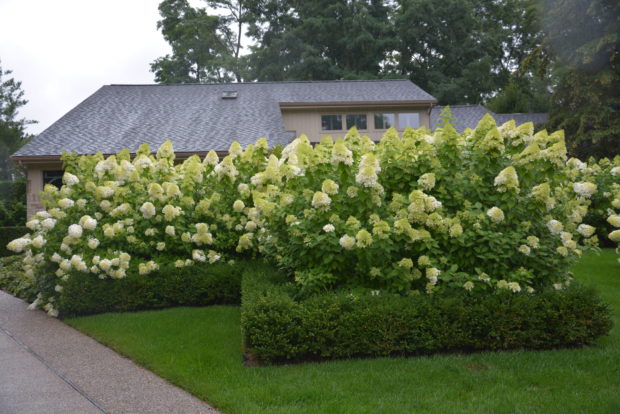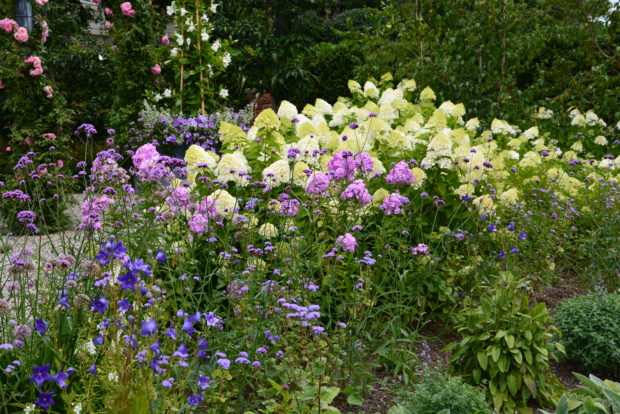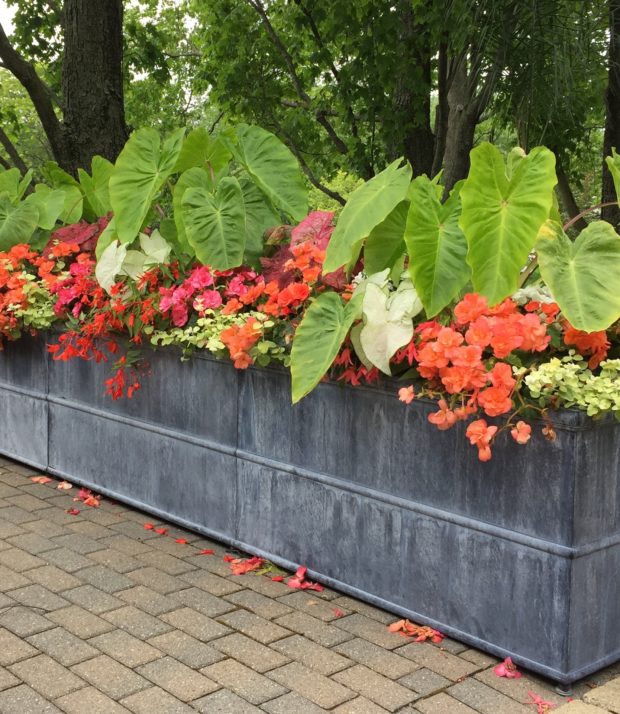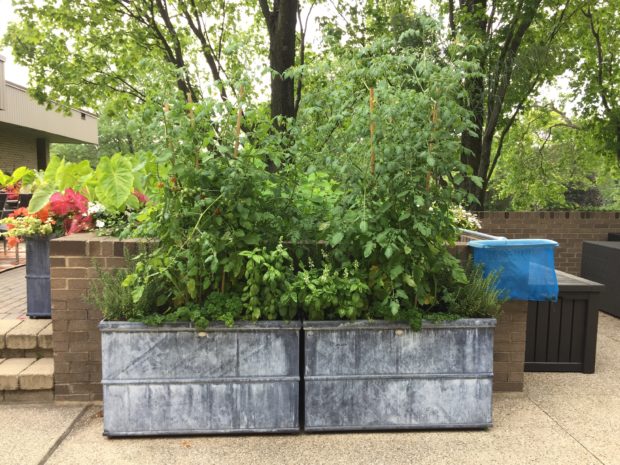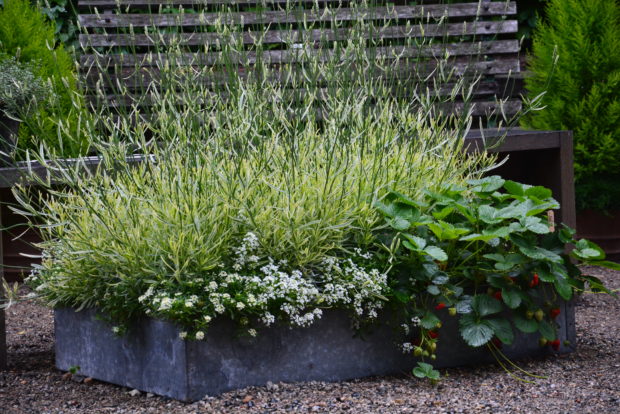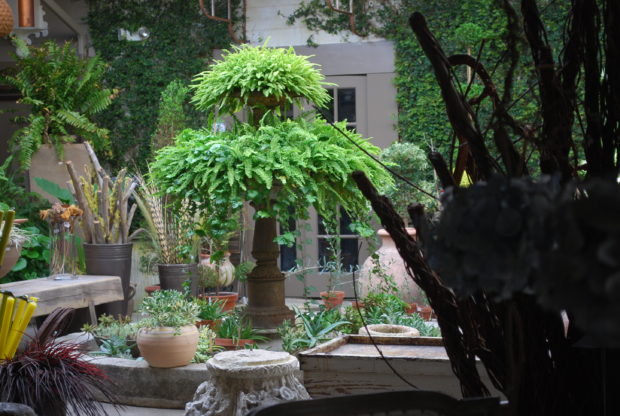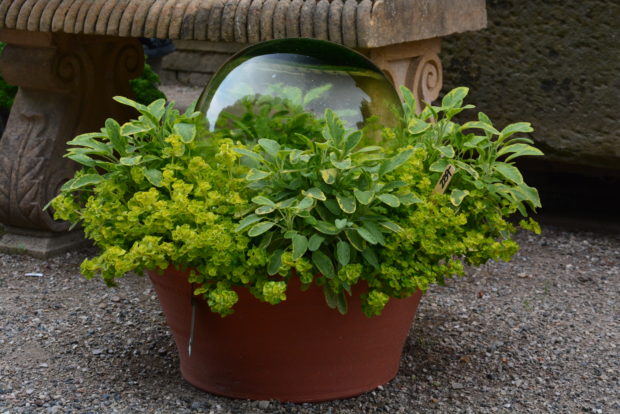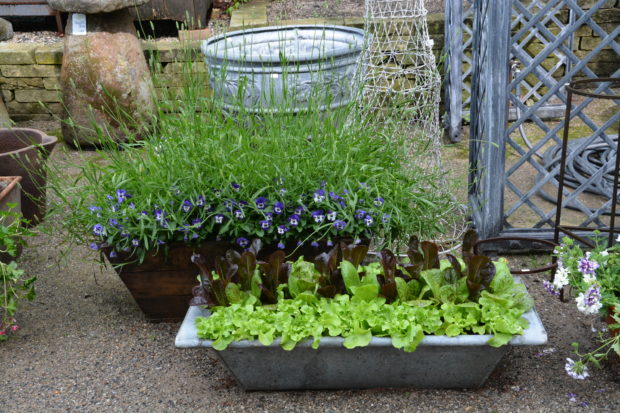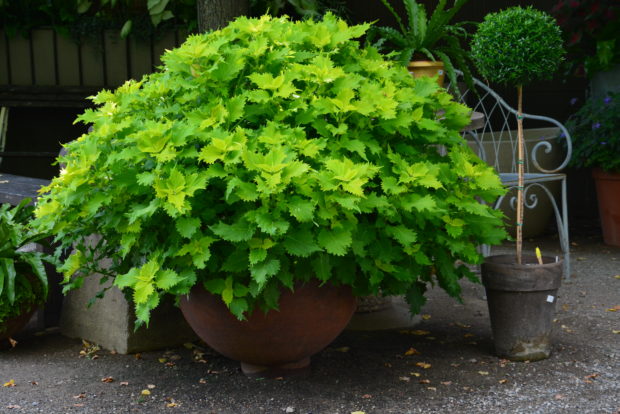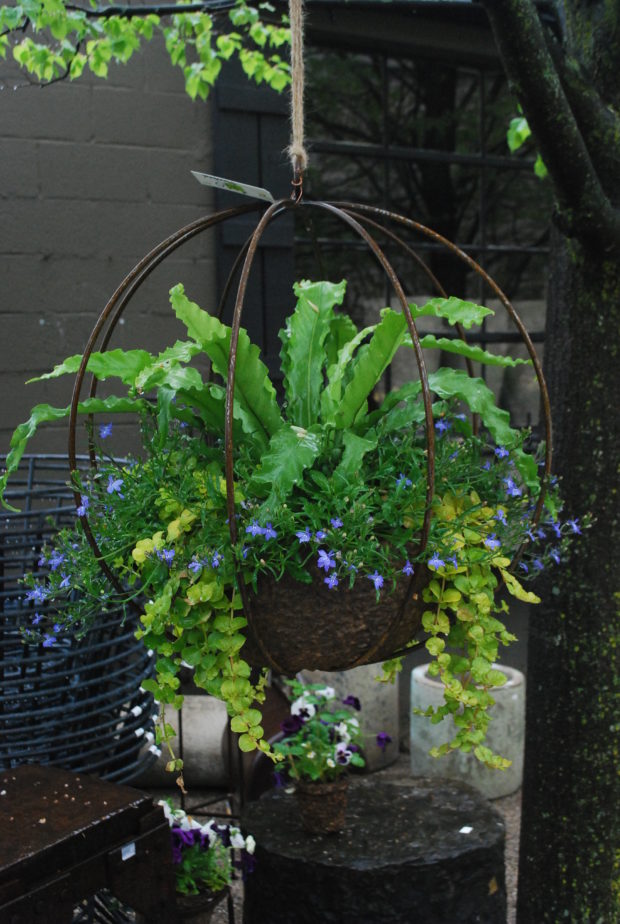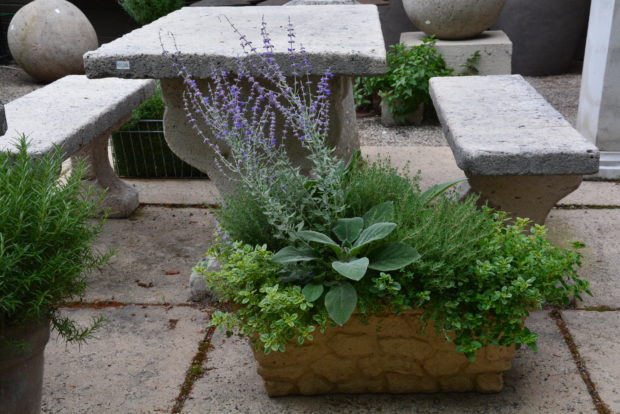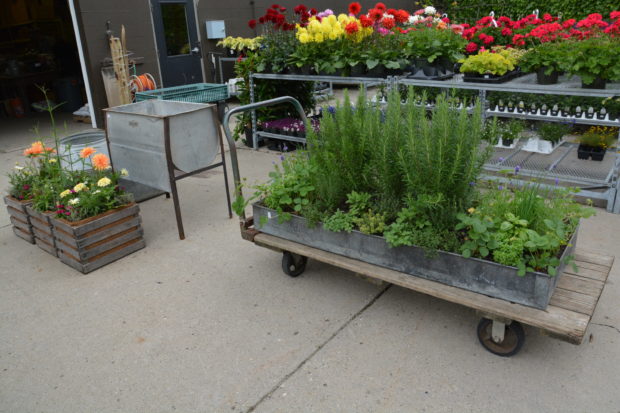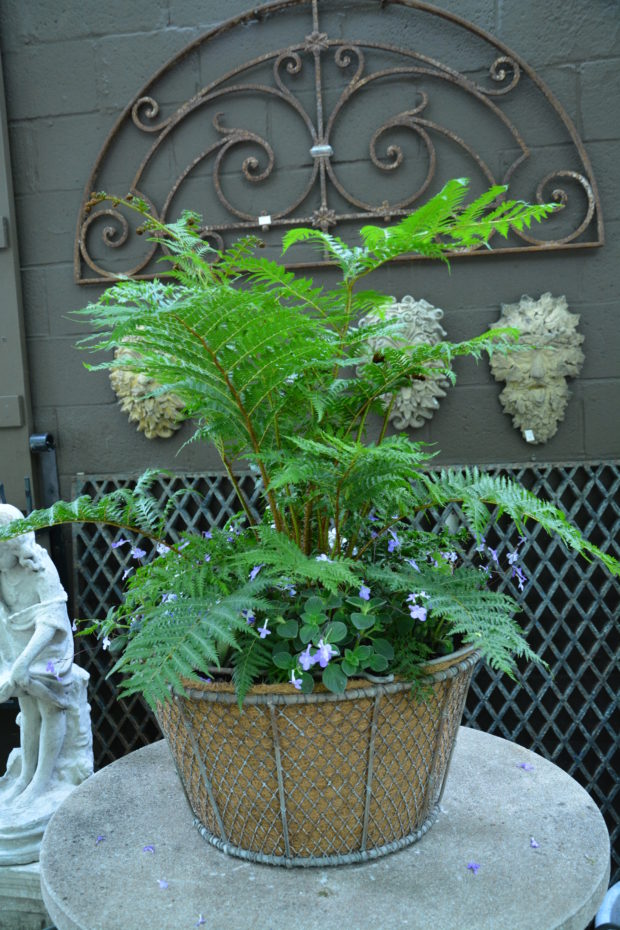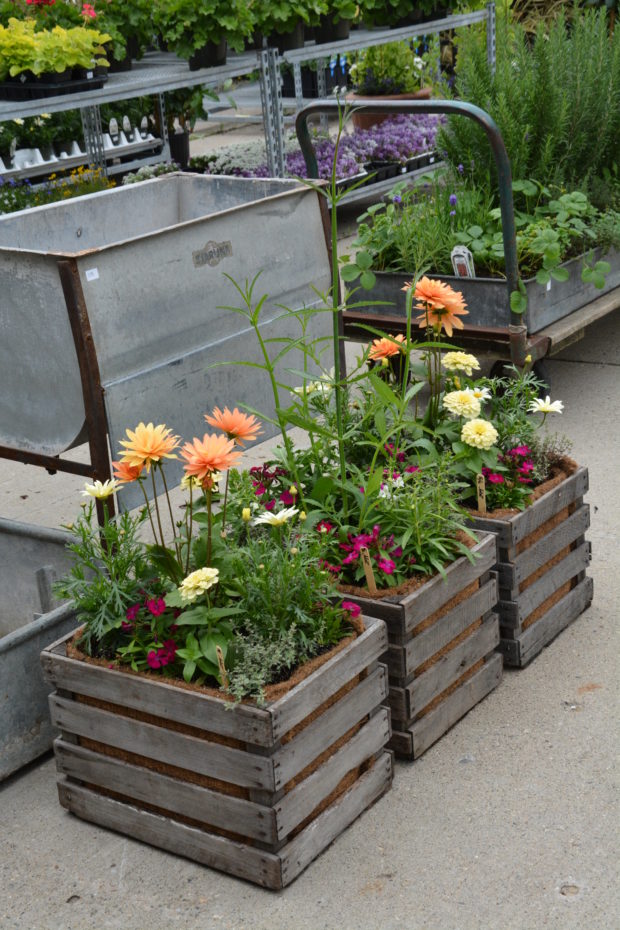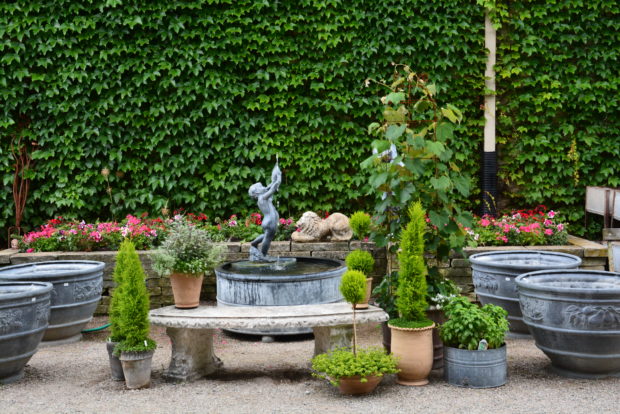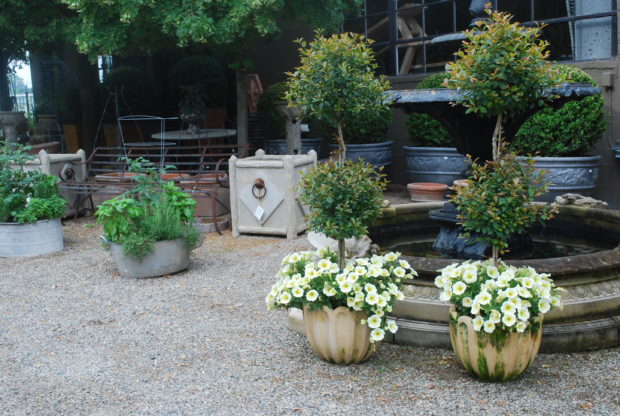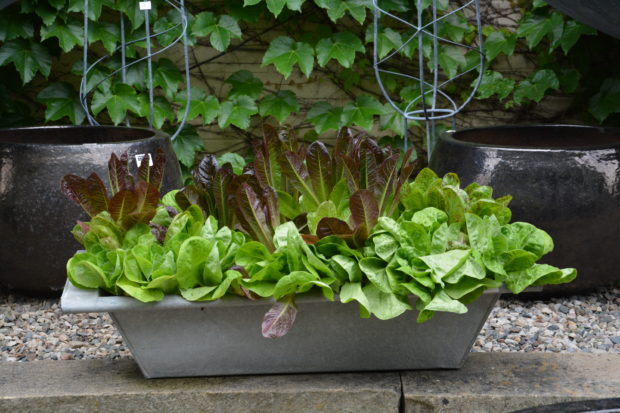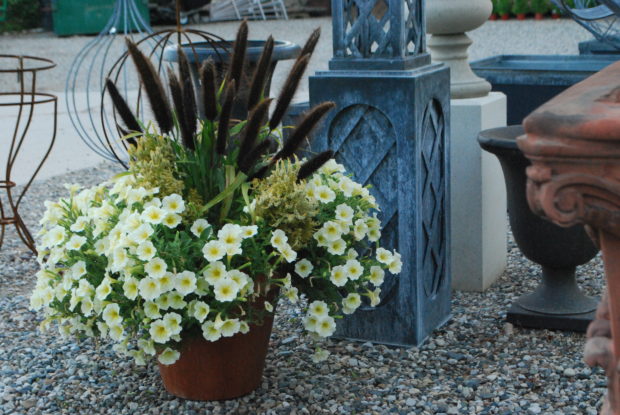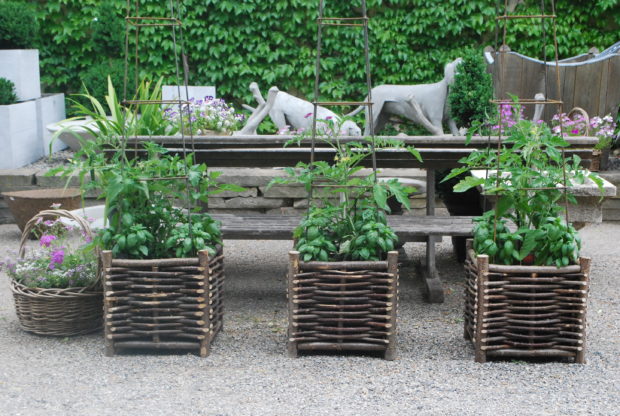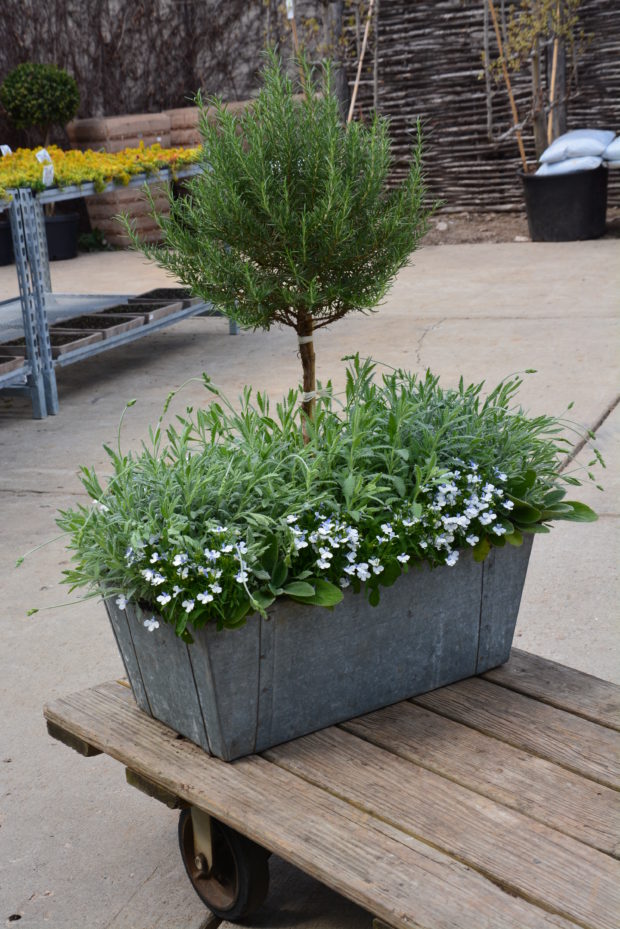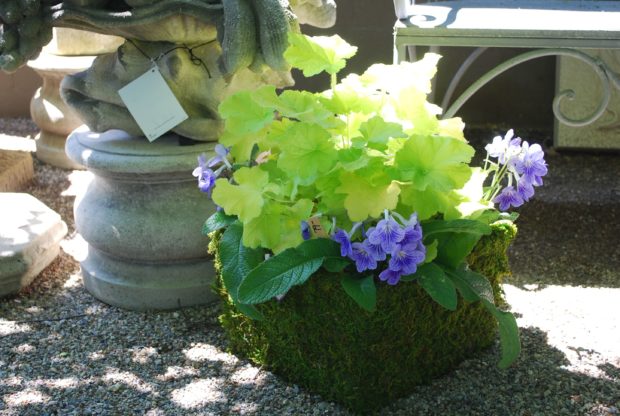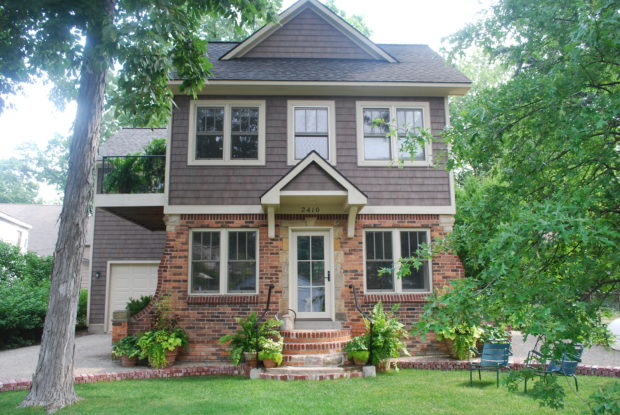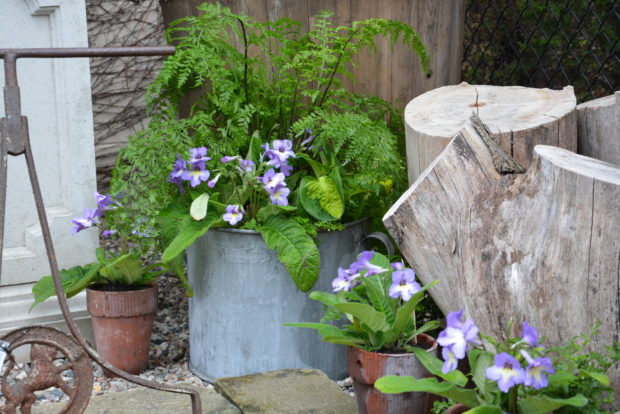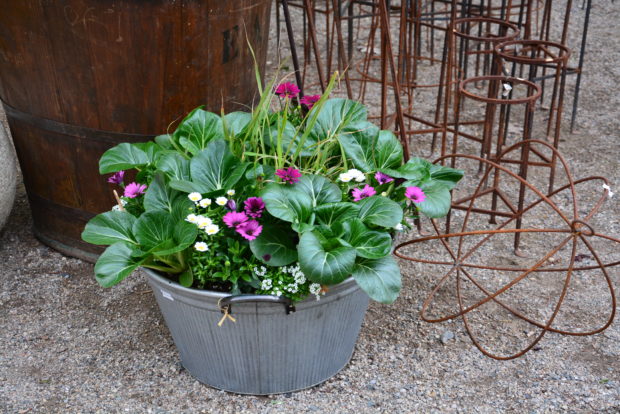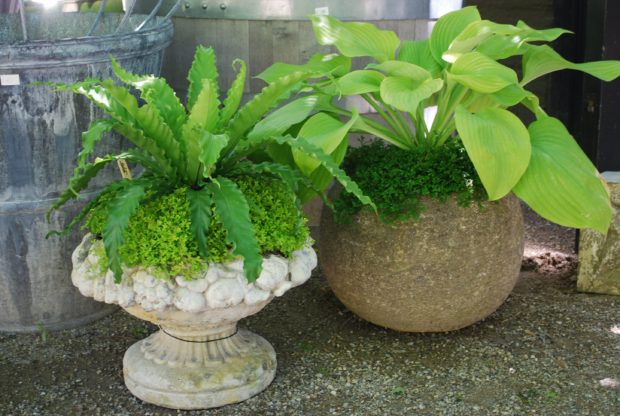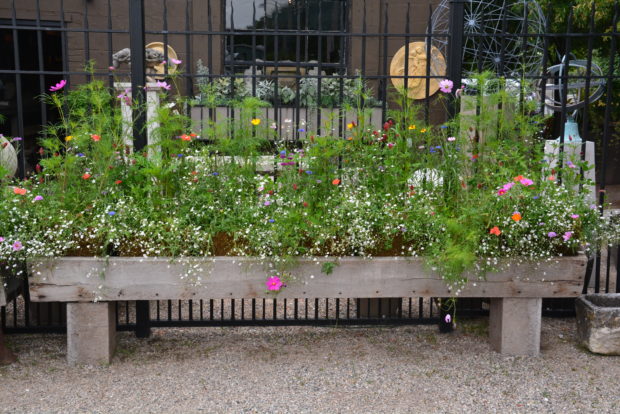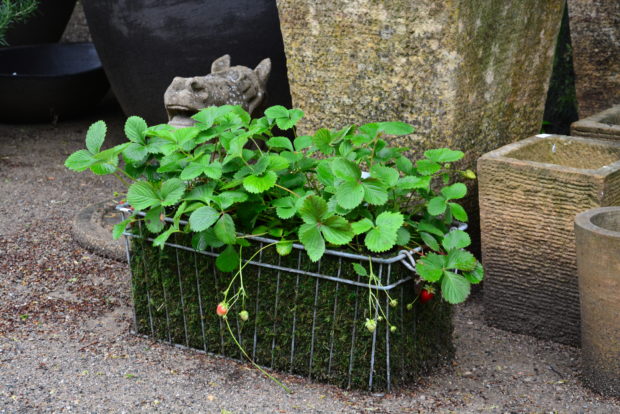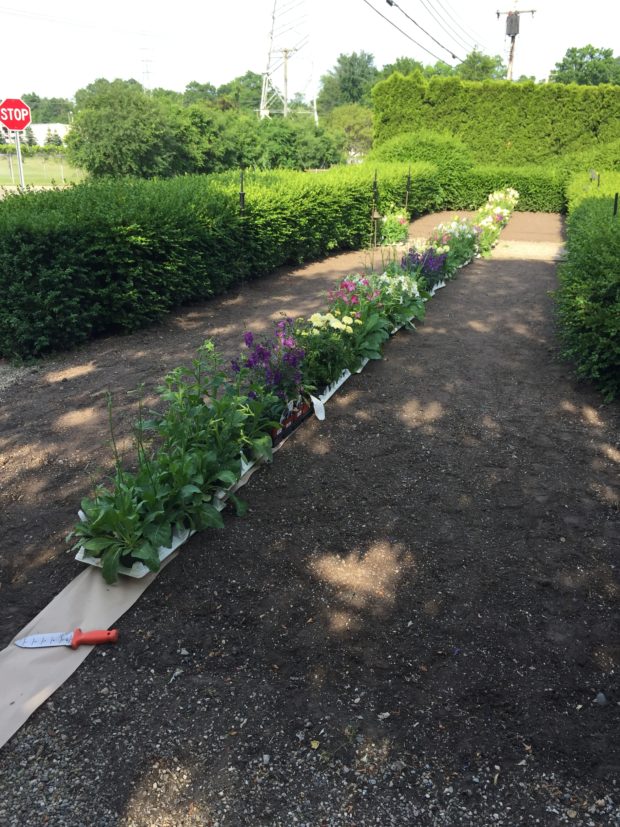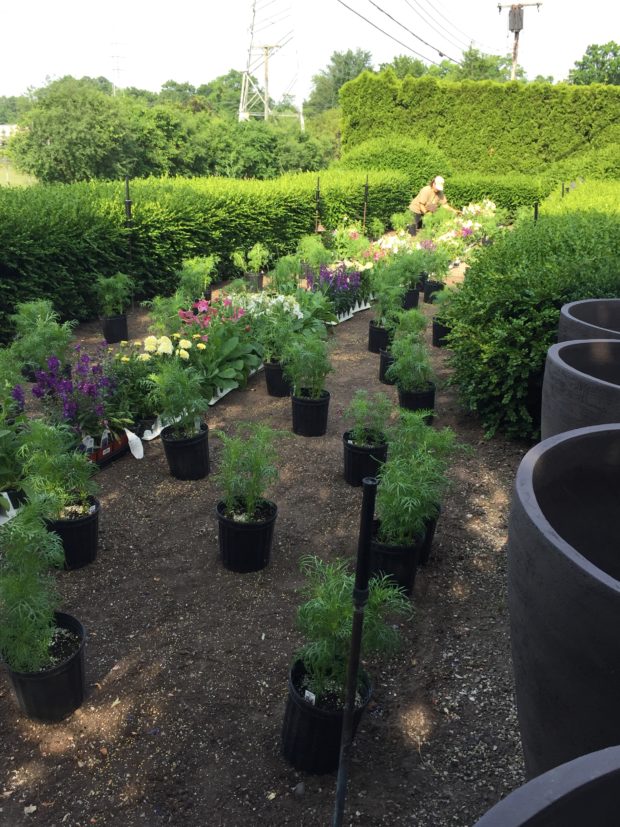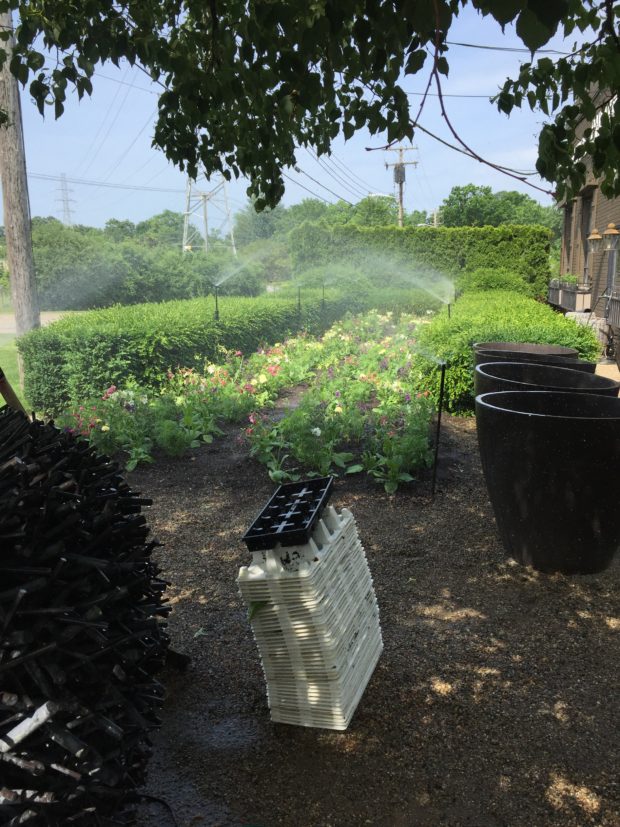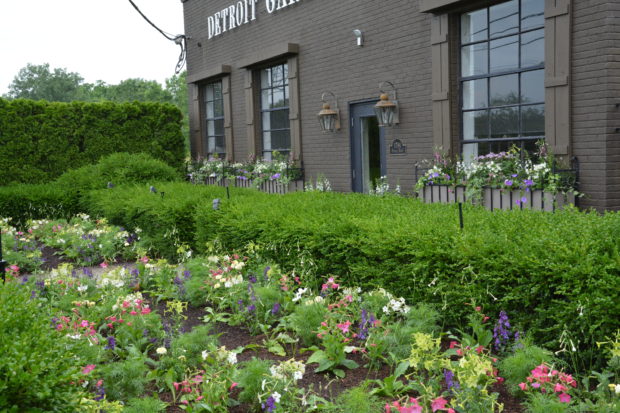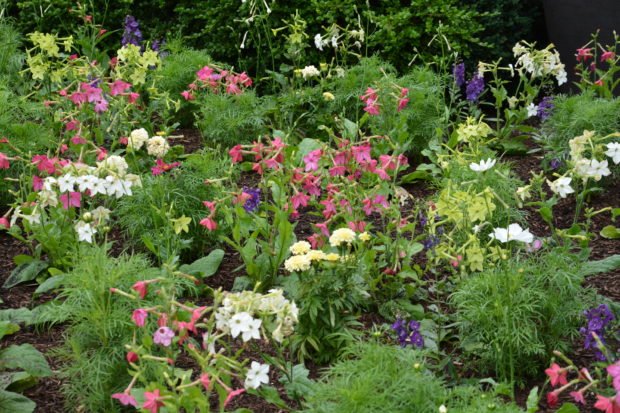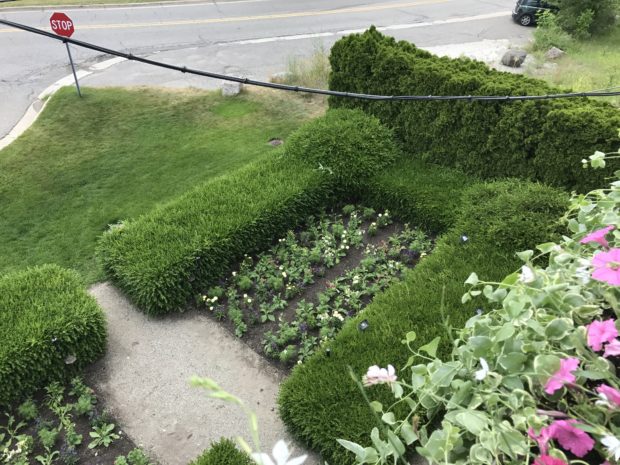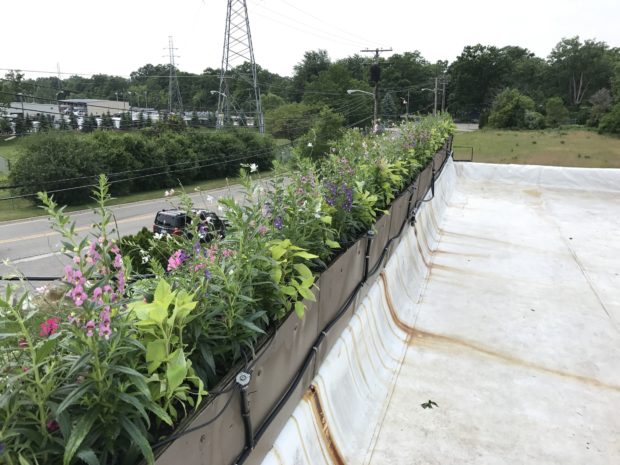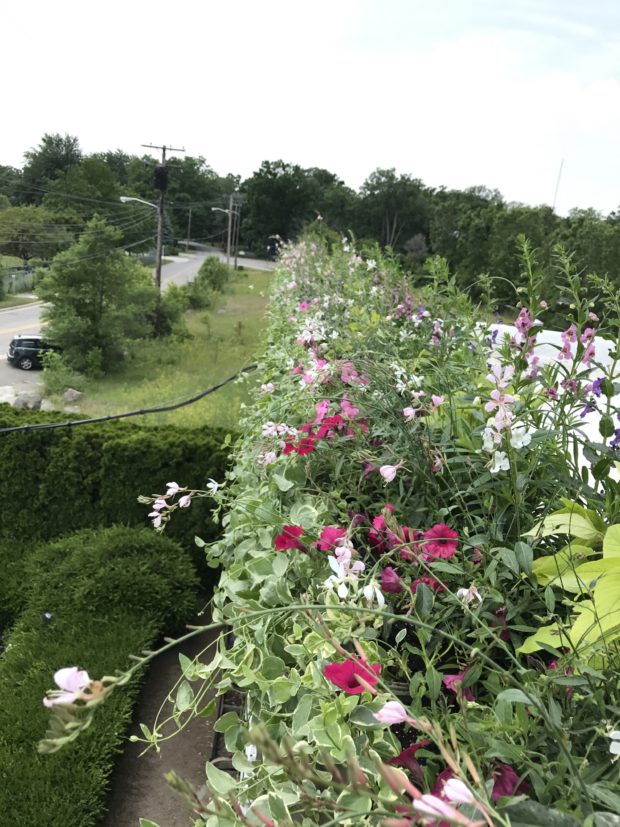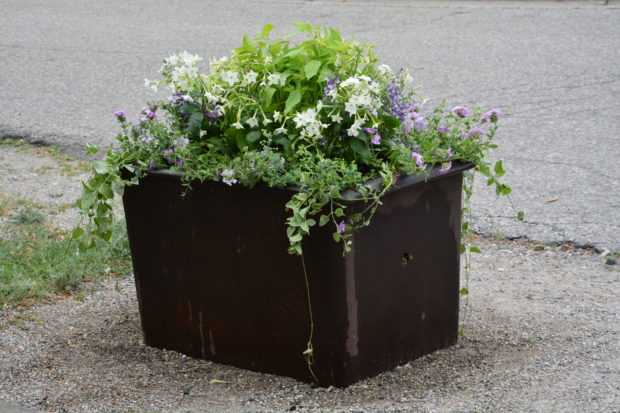 Given that close to 7000 gardeners have read my last post on hydrangeas in the past few days, I am encouraged to write again. I went back out last night to rephotograph my hydrangeas with a specific purpose in mind. How do I site them in the landscape, and how do I take care of them? I have a significant disclaimer up front. How I grow hydrangeas is not the be all and end all. How I grow them works for me. What will work for you involves a lot of independent thought, trial, and error. I would be the first to suggest that you trust your own experience over mine. That said, first up is a discussion about how to grow and manage these big shrubs. No matter where you plant them, hydrangeas reward a gardener who is willing to prune. I only prune in the spring, when the buds are beginning to swell. Limelight hydrangeas that have gotten leggy and ungainly will respond to a pruning to within 18″-24″ above grade. Just be advised that a hard pruning is a restorative pruning that may take 2 years to bring them back up to heavy blooming stage. A yearly pruning down to 18″-24″ results in fewer, and larger flowers.
Given that close to 7000 gardeners have read my last post on hydrangeas in the past few days, I am encouraged to write again. I went back out last night to rephotograph my hydrangeas with a specific purpose in mind. How do I site them in the landscape, and how do I take care of them? I have a significant disclaimer up front. How I grow hydrangeas is not the be all and end all. How I grow them works for me. What will work for you involves a lot of independent thought, trial, and error. I would be the first to suggest that you trust your own experience over mine. That said, first up is a discussion about how to grow and manage these big shrubs. No matter where you plant them, hydrangeas reward a gardener who is willing to prune. I only prune in the spring, when the buds are beginning to swell. Limelight hydrangeas that have gotten leggy and ungainly will respond to a pruning to within 18″-24″ above grade. Just be advised that a hard pruning is a restorative pruning that may take 2 years to bring them back up to heavy blooming stage. A yearly pruning down to 18″-24″ results in fewer, and larger flowers.
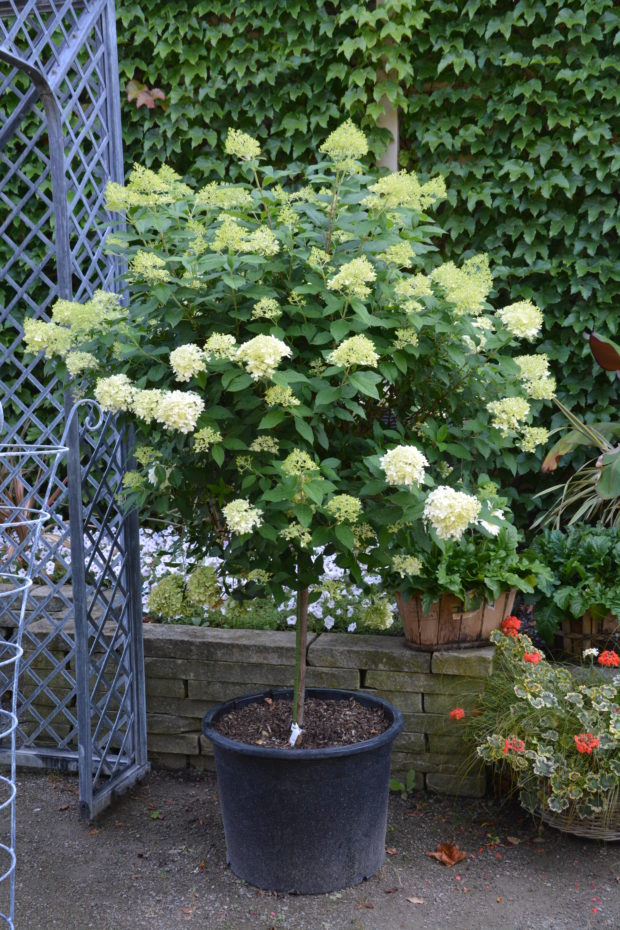 Want more flowers rather than large flowers? Prune the topmost branches shorter than the bottom branches-so every branch is exposed to the light. Prune several times early in the season to promote branching. Come mid May, I stop pruning.This hydrangea on standard has a beautiful branchy structure as a result of multiple pruning sessions. Notice how the flowers are much smaller than my hydrangeas at home? Post an early spring pruning, a lighter pruning over the course of a few spring weeks results in an embarrassment of riches in smaller flowers.
Want more flowers rather than large flowers? Prune the topmost branches shorter than the bottom branches-so every branch is exposed to the light. Prune several times early in the season to promote branching. Come mid May, I stop pruning.This hydrangea on standard has a beautiful branchy structure as a result of multiple pruning sessions. Notice how the flowers are much smaller than my hydrangeas at home? Post an early spring pruning, a lighter pruning over the course of a few spring weeks results in an embarrassment of riches in smaller flowers.
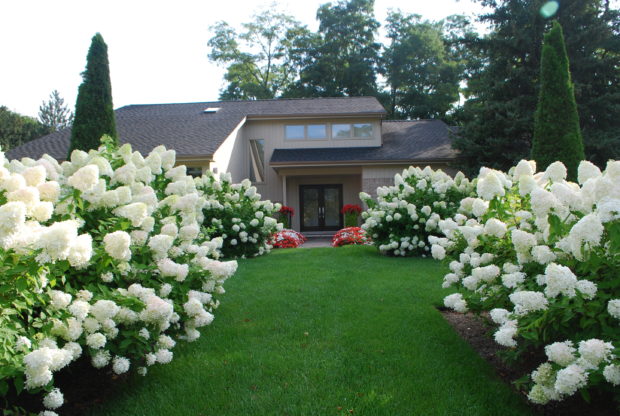 In love with the giant flowers? Prune vigorously. Pruning deciduous shrubs is not just a matter of style, and it certainly is not a matter of control. Pruning promotes growth that maximizes the opportunity for good blooming. A Limelight left to its own devices will have lots of growth on the top that eventually results in leggy and leafless lower branches.
In love with the giant flowers? Prune vigorously. Pruning deciduous shrubs is not just a matter of style, and it certainly is not a matter of control. Pruning promotes growth that maximizes the opportunity for good blooming. A Limelight left to its own devices will have lots of growth on the top that eventually results in leggy and leafless lower branches.
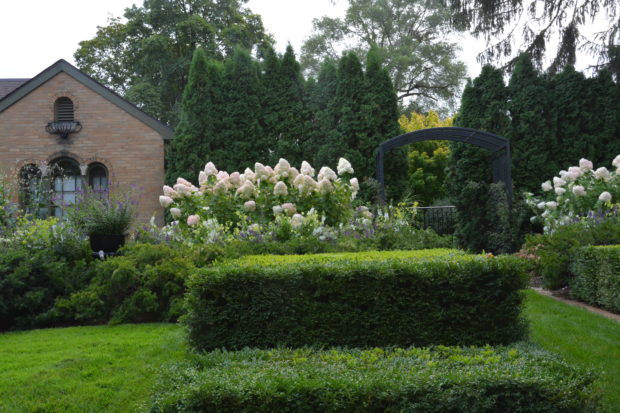 Big shrubs do and will grow big. Harder pruning may result in a finished size and height at the low end of their growth range. Severe pruning-as in pruning right down to the ground, forces growth from below ground, from what are called basal shoots. I never prune hydrangeas that hard. I like having some old wood to support all those new branches to come. Pruning is all about what the future. The Limelights bloom on new wood – the current year’s growth. If you grow hydrangeas that bloom on the previous year’s growth, prune right after they bloom. This enables them to grow and set flowers for the season to come before winter. Leave them be until after they bloom the following year. But no matter what cultivar you grow, adequate light and water will reward your effort to grow them.
Big shrubs do and will grow big. Harder pruning may result in a finished size and height at the low end of their growth range. Severe pruning-as in pruning right down to the ground, forces growth from below ground, from what are called basal shoots. I never prune hydrangeas that hard. I like having some old wood to support all those new branches to come. Pruning is all about what the future. The Limelights bloom on new wood – the current year’s growth. If you grow hydrangeas that bloom on the previous year’s growth, prune right after they bloom. This enables them to grow and set flowers for the season to come before winter. Leave them be until after they bloom the following year. But no matter what cultivar you grow, adequate light and water will reward your effort to grow them.
 Hydrangeas are big growing shrubs with course leaves and giant flowers. This means they are eminently able to hold down a spot in the garden all on their own. But how does a gardener beautifully integrate them into a garden and landscape? I make sure they have lots of company-both taller and shorter. My landscape can accommodate them at their full height. I have a much larger and taller hedge of arborvitae planted behind them. That dark green foliage highlights the flowers in a dramatic way.
Hydrangeas are big growing shrubs with course leaves and giant flowers. This means they are eminently able to hold down a spot in the garden all on their own. But how does a gardener beautifully integrate them into a garden and landscape? I make sure they have lots of company-both taller and shorter. My landscape can accommodate them at their full height. I have a much larger and taller hedge of arborvitae planted behind them. That dark green foliage highlights the flowers in a dramatic way.
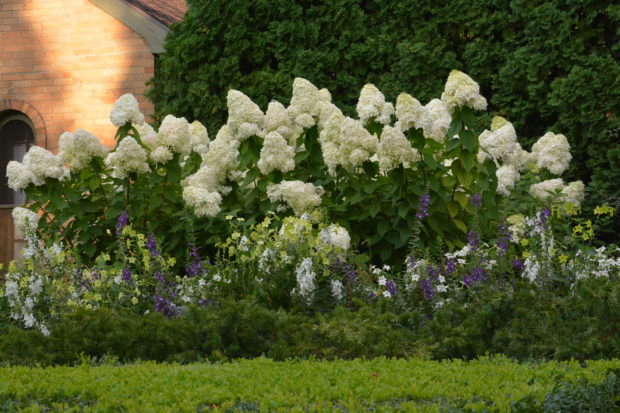 There are several more layers of plantings in front of them. A hedge of Hicks yews whose health had been declining for years was removed. A series of planter boxes were put in their place. This years planting of nicotiana and angelonia is as loose and airy as the hydrangeas are solid and stiff. Companions to hydrangeas that have a looser habit of growth compliment them. A middle layer of loosely pruned taxus densiformis is faced down with clipped boxwood shapes. 4 layers of companionship is none too few for a shrub that grows 6-8 feet tall.
There are several more layers of plantings in front of them. A hedge of Hicks yews whose health had been declining for years was removed. A series of planter boxes were put in their place. This years planting of nicotiana and angelonia is as loose and airy as the hydrangeas are solid and stiff. Companions to hydrangeas that have a looser habit of growth compliment them. A middle layer of loosely pruned taxus densiformis is faced down with clipped boxwood shapes. 4 layers of companionship is none too few for a shrub that grows 6-8 feet tall.
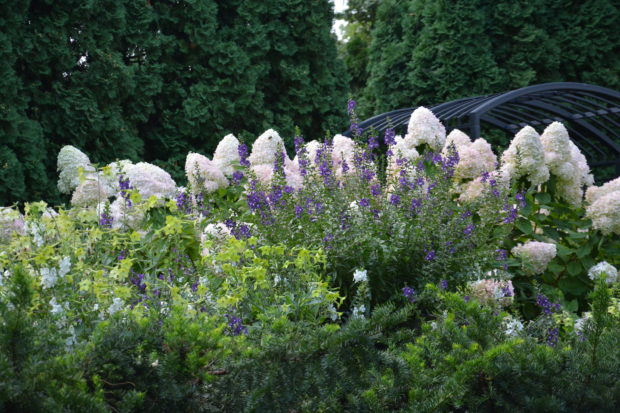 Limelight hydrangeas integrated into a garden
Limelight hydrangeas integrated into a garden
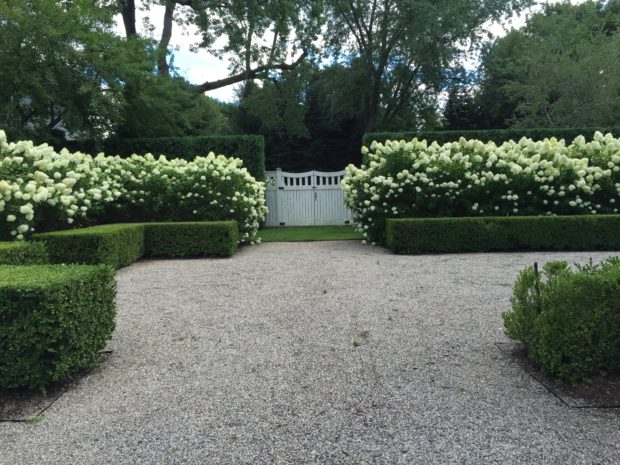 Limelight hydrangea hedge faced down with boxwood
Limelight hydrangea hedge faced down with boxwood
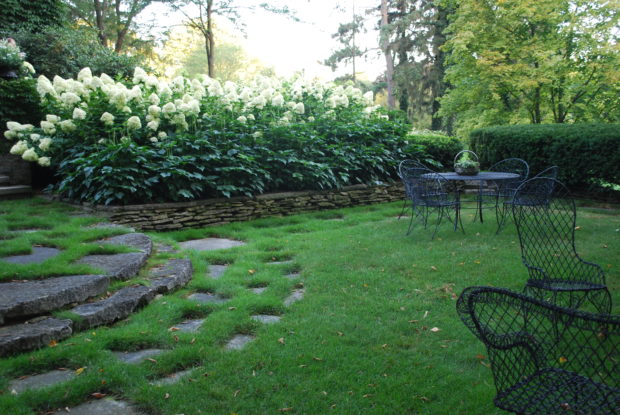 Limelight hydrangeas faced down with anemone “Honorine Jobert”
Limelight hydrangeas faced down with anemone “Honorine Jobert”
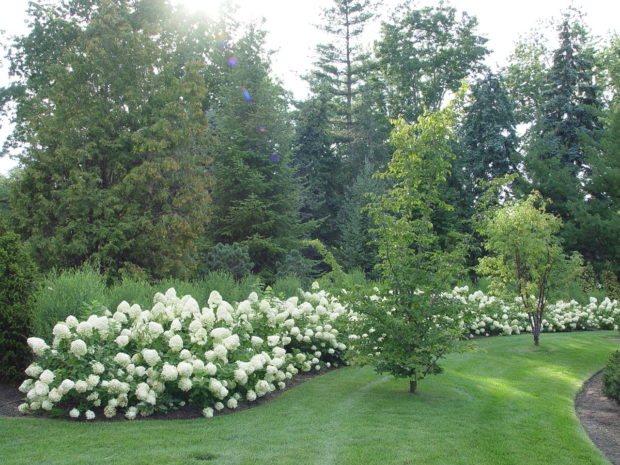 hedge of Limelights as a border to a large group of mixed evergreens
hedge of Limelights as a border to a large group of mixed evergreens
 These hydrangeas are pruned to keep them at a 5.5-6 foot height.
These hydrangeas are pruned to keep them at a 5.5-6 foot height.
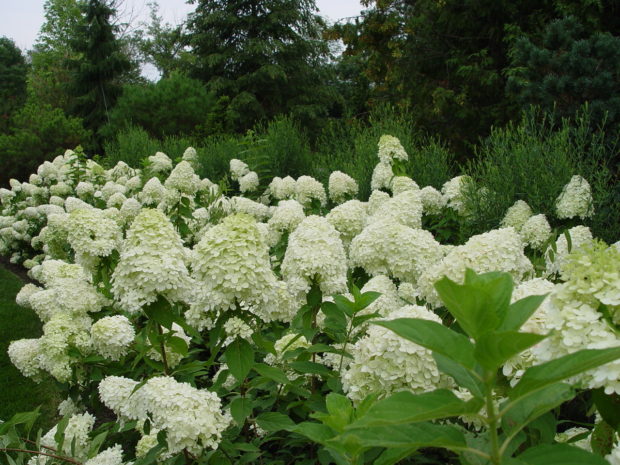 Between the large evergreens and the hydrangeas is a mass of boltonia asteroides.
Between the large evergreens and the hydrangeas is a mass of boltonia asteroides.
 new planting of annabelles and limelights together
new planting of annabelles and limelights together
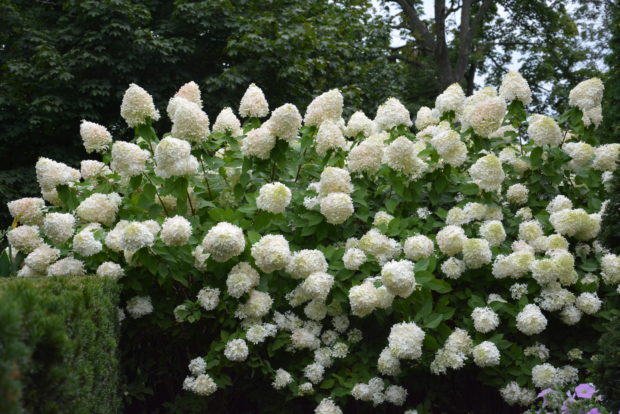 Limelights blooming top to bottom
Limelights blooming top to bottom
 Limelights massed in containers
Limelights massed in containers
 My client’s containers featuring Limelights on standard are robust and showy this early part of September. We will heel them in the ground at our landscape yard late in the fall, and plant them back in these pots come spring. I do have clients who have and do winter them over in their containers. I am not that nervy with plants that do not belong to me, but I am not surprised to hear this. Hydrangeas ask for little, and are so satisfying to grow.
My client’s containers featuring Limelights on standard are robust and showy this early part of September. We will heel them in the ground at our landscape yard late in the fall, and plant them back in these pots come spring. I do have clients who have and do winter them over in their containers. I am not that nervy with plants that do not belong to me, but I am not surprised to hear this. Hydrangeas ask for little, and are so satisfying to grow.
